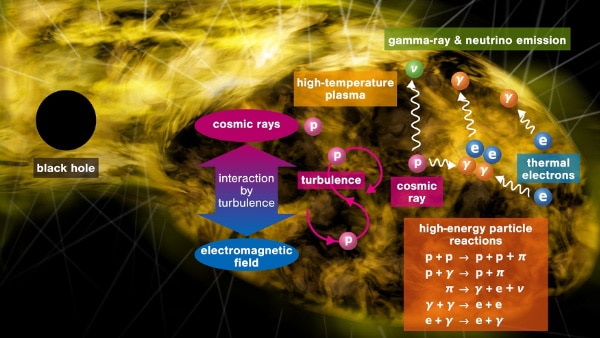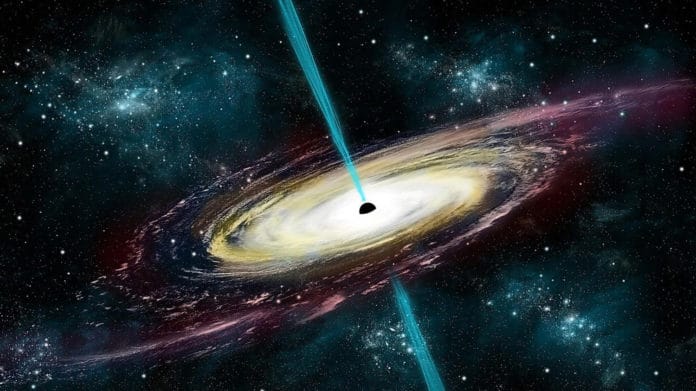High energetic cosmic particles such as x-rays, gamma rays, and neutrinos are believed to be created by powerful cosmic-ray accelerators or surrounding environments in the Universe. Yet, their origins remain unknown.
Active supermassive black holes are believed to act as Active galactic nuclei (AGN), the most promising emitters of high-energy gamma rays and neutrinos. But, recent studies have revealed that they do not explain the observed gamma rays and neutrinos. It indicates other source classes.
An international research team has proposed a scenario that explains these; black holes with low activity act as major factories of high-energy cosmic particles.
The team proposed a new model that shows that active black holes and non-active, “mellow” ones are important and acts as major factories of high-energy cosmic particles.
When matter falls into or comes closer than the event horizon of a black hole, a huge amount of gravitational energy is released. This process heats the gas, forming high-temperature plasma. The temperature can reach as high as tens of billions of Celsius degrees for low-accreting black holes because of inefficient cooling, and the plasma can generate gamma-rays in the megaelectron volt range.

There are multiple mellow black holes in the Universe that dim like individual objects. The model suggests that the gamma rays from low-accreting supermassive black holes may contribute significantly to the observed gamma-rays in the megaelectron volt range.
The protons in the plasma can be accelerated to energies roughly 10,000 times higher. These accelerated protons produce high-energy neutrinos through interactions with matter and radiation, which results in the higher-energy part of the cosmic neutrino data.
This picture can be applied to active black holes, as demonstrated by previous research. The supermassive black holes, including active and non-active galactic nuclei, can explain a large fraction of the observed IceCube neutrinos in a wide energy range.
Scientists noted, “The proposed scenario predicts gamma-ray counterparts in the megaelectron volt range to the neutrino sources. Most of the existing gamma-ray detectors are not tuned to detect them. Still, future gamma-ray experiments, together with next-generation neutrino experiments, will be able to detect the multi-messenger signals.”
Journal Reference:
- Shigeo S Kimura, Kohta Murase, Péter Mészáros. Soft gamma rays from low accreting supermassive black holes and connection to energetic neutrinos. DOI: 10.1038/s41467-021-25111-7
